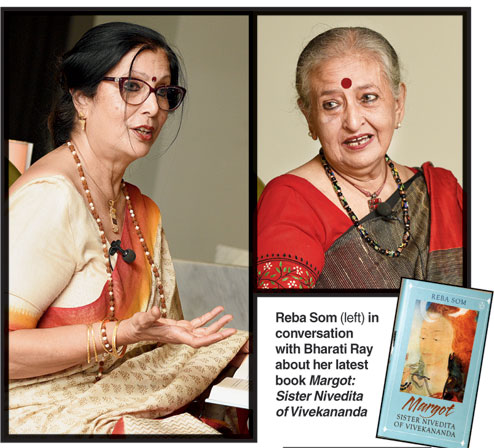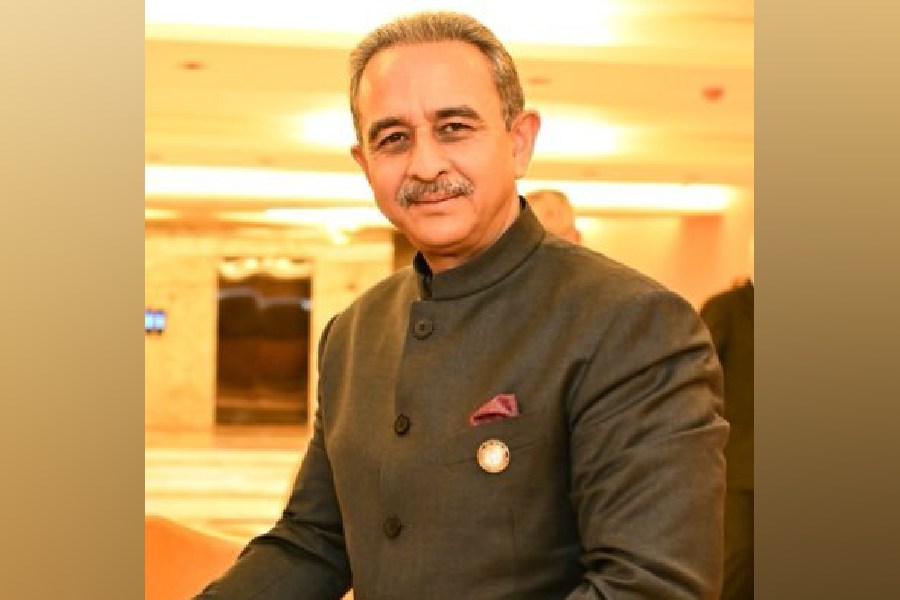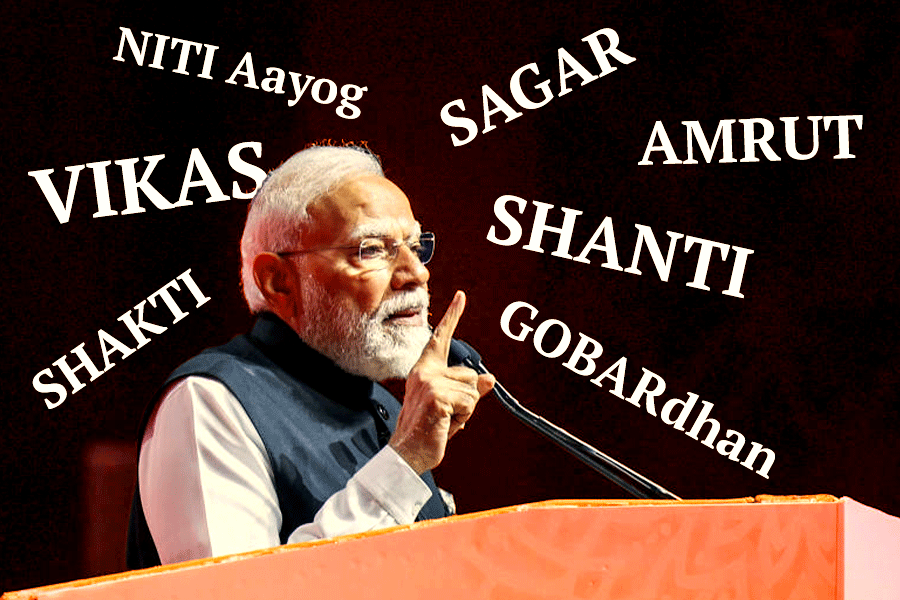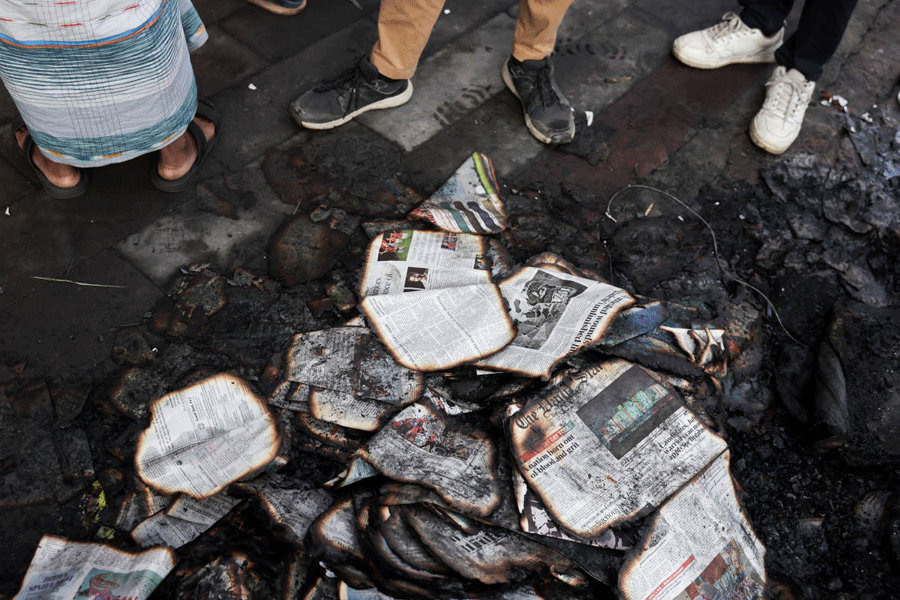
After Gandhi and Tagore, historian and author Reba Som wrote about Sister Nivedita in her latest book, Margot: Sister Nivedita of Vivekananda. From Nivedita’s relationship with Swami Vivekananda and Rabindranath Tagore to her contribution to India, Som spoke before a select audience at An Author’s Afternoon — presented by Shree Cement and Taj Bengal, held in association with t2, Prabha Khaitan Foundation and literary agency Siyahi — at the Alipore star hotel. In conversation with her was Bharati Ray, vice-president, ICCR. Excerpts from Reba speak....
The musical journey
Like many Bengali girls, I too started learning Rabindrasangeet from the age of five. Through my life in so many countries of the world, it remained my constant companion. I think Rabindrasangeet for many of us is like a personal religion, you dip into the songs and you almost get therapeutic relief. But I thought that there is not much in English that traces his life through his music and that’s exactly what I have tried to do in Rabindranath Tagore, the Singer and His Song.
Vivekananda’s spokesperson
Vivekananda saw that his legacy could be carried on by Nivedita. All his scattered thoughts through lectures and writings... it is she who collated them and in lucid prose wrote down his thoughts. So I think he recognised this and saw her as a very worthy person to carry his message forward, which is what she did. I don’t think he saw her as a spiritual person. I think she was in many ways a karmayogi. She believed in work by hand… the way she went after the plague victims, the way she went after her school… that is the real Nivedita.

The turning point
When Vivekananda came back from his Amarnath trip, the focus of his adoration turned from Shiva to the Mother Goddess. By adoration of a prepubescent girl child as divinity, which they still do at Belur (Kumari Puja), he could sidestep the sexuality of the feminine principle while lauding her compassion and strength. This became an example at the time of the national struggle, with many young people postponing marriage to after India gained freedom.
On his return from Amarnath, Vivekananda went into this space of Kali worship and he wrote this poem in a fit of ecstasy, in which the refrain was ‘Come, Mother, come/ For Terror is Thy name/ Death is in Thy breath/And every shaking step/Destroy a world forever’.
And how did Nivedita react to Kali? She said that initially she felt bewildered by the Kali image, the nude black-blue woman with a garland of skulls, and it was Vivekananda who explained to her what Kali meant in terms of ‘maya’ and ‘illusion’. That is something she not only imbibed, she wrote somewhere, ‘I set myself to enter Kali worship as one would set oneself to learn a new language’. I think the fantastic thing is how she gave two lectures on Kali, one at the temple at Kalighat and one at Royal Albert Hall (London).
Nivedita’s idea of India
Nationalism for Nivedita meant something quite different from what was debated by Tagore in his lectures on nationalism. It was not a western construct of one artificial entity into which you push diverse people. Nivedita spoke about something like ‘aggressive Hinduism’, which today makes you wonder what on earth was she talking about?! What she was basically saying was that the British did not make India one entity. The idea of India has always been there and we sometimes forget that. It lies in the civilisational unity that underlies India’s cultural traditions, art traditions, literature — particularly the epics — and she, with her western mind, could always co-relate. So she talked about the Ramayana and the Mahabharata as the Icelandic sagas and the Greek epics, and felt that in their different interpretations, different recensions, different depictions in art, literature, music, dance, sculpture... was the idea of India. And that for her was very important to talk about at a time when India was under threat and the Bengal Partition had happened, Swadeshi politics took over and there was boycott.

Scientific India
To bring out the finest scientific minds that we had in the world, she is the one who gave publicity to Jagadish Chandra Bose, attracted finances for his work, edited many of his works. Till the end she was a great friend of Jagadish and Abala Bose.
Promoter of art
In 2013, it was Vivekananda’s 150 birth anniversary. Ramakrishna Mission had approached us and they told us they were going to have an art exhibition… I knew very little about Nivedita at that point. We were in constant touch and discussed how to go about the whole event… all the monks of Ramakrishna Mission and Belur would come to us. I couldn’t help but ask, what is the connect? You are celebrating Vivekananda’s birthday, but why art? They would say that he and Nivedita were the great aficionados and promoters of art. Only when I went back and looked into this whole thing, I realised that art also was an idiom for nationalism. She wanted to make it abundantly clear to artists like Abanindranath Tagore, Nandalal and others that our roots in art go to Ajanta. She scolded them! She was a feisty lady. She actually forced Abanindranath and Nandalal… bought them tickets and said go and see Ajanta and then realise where your roots are. Don’t just keep looking at European models, don’t keep saying that the Hellenic model is the source of Indian art. The cover of my book is Abanindranath Tagore’s beautiful painting of Uma inspired by Nivedita… topknot with hazel hair.
Effect on Tagore
What struck me most while reading and researching on her was that as a woman, as a foreigner, she gets totally into a male bastion and she holds forth on equal terms, not to be snubbed or dismissed. Rabindranath was wary of her because he thought this was a woman who is going to teach his daughter English... he goes to her and says, can you teach my daughter English? And she says, of course not! Why would you teach your daughter English? That’s another language. What about your own language? Tagore got really worried and did not know how to deal with her. He wrote about it… he says, “boloban akroman”! We talk about this transformative effect of Nivedita on Vivekananda, but on Rabindranath too… because the ending of Gora (novel by Tagore) was changed because of his interaction with Nivedita. I found that extraordinary!
Tagore was inviting the world into his Santiniketan concept and Nivedita was doing just the opposite. She was saying, keep the West out and rely on your Indian-ness. There was a bit of a clash there. The relationship between Tagore and Nivedita went through many phases, starting from Tagore asking her to be the English teacher to Vivekananda disapproving of her mixing with the (Tagore) family.
After Vivekananda died in 1902, her interaction with Rabindranath steadily grew and there was a time when due to financial adversity, she had to almost give up her Bose Para Lane house, which was housing a school, and Rabindranath had offered his own house to her. They worked shoulder to shoulder in the anti-plague work. She was probably the first translator of Tagore’s short stories… Kabuliwala and two more. After she died in 1911, Rabindranath wrote a very fine obituary in a
Bangla article called Bhagini Nivedita and that I have translated in my book.

Research on Nivedita
A lot of what we are talking about came out of letters and that was my biggest find. My research is based on more than 800 letters, and I found them, in fact, in College Street, in two moth-eaten volumes, now out of print. In letters to two of her women friends, she poured out her heart.
Text: Malancha Dasgupta
Pictures: Rashbehari Das











